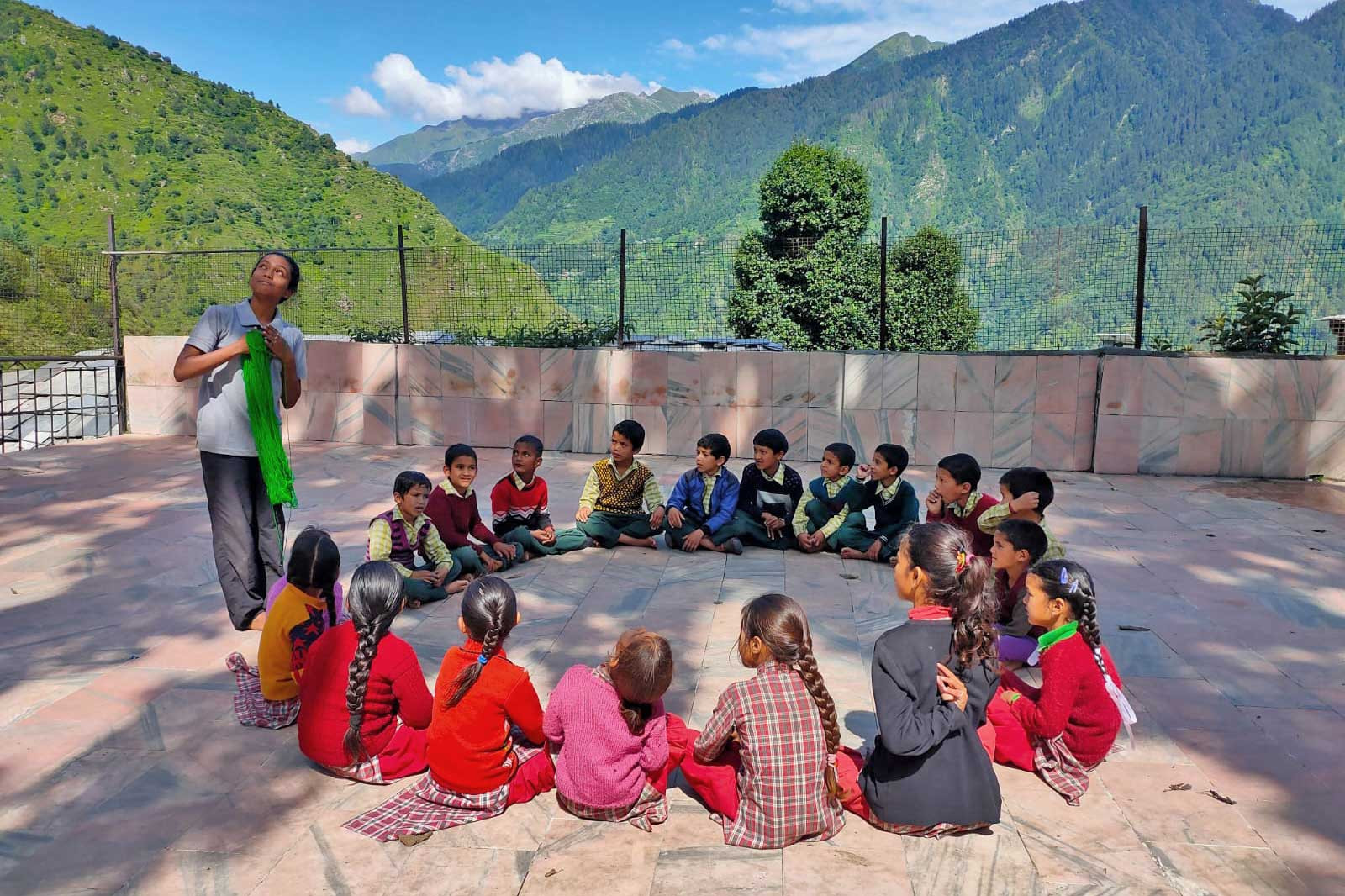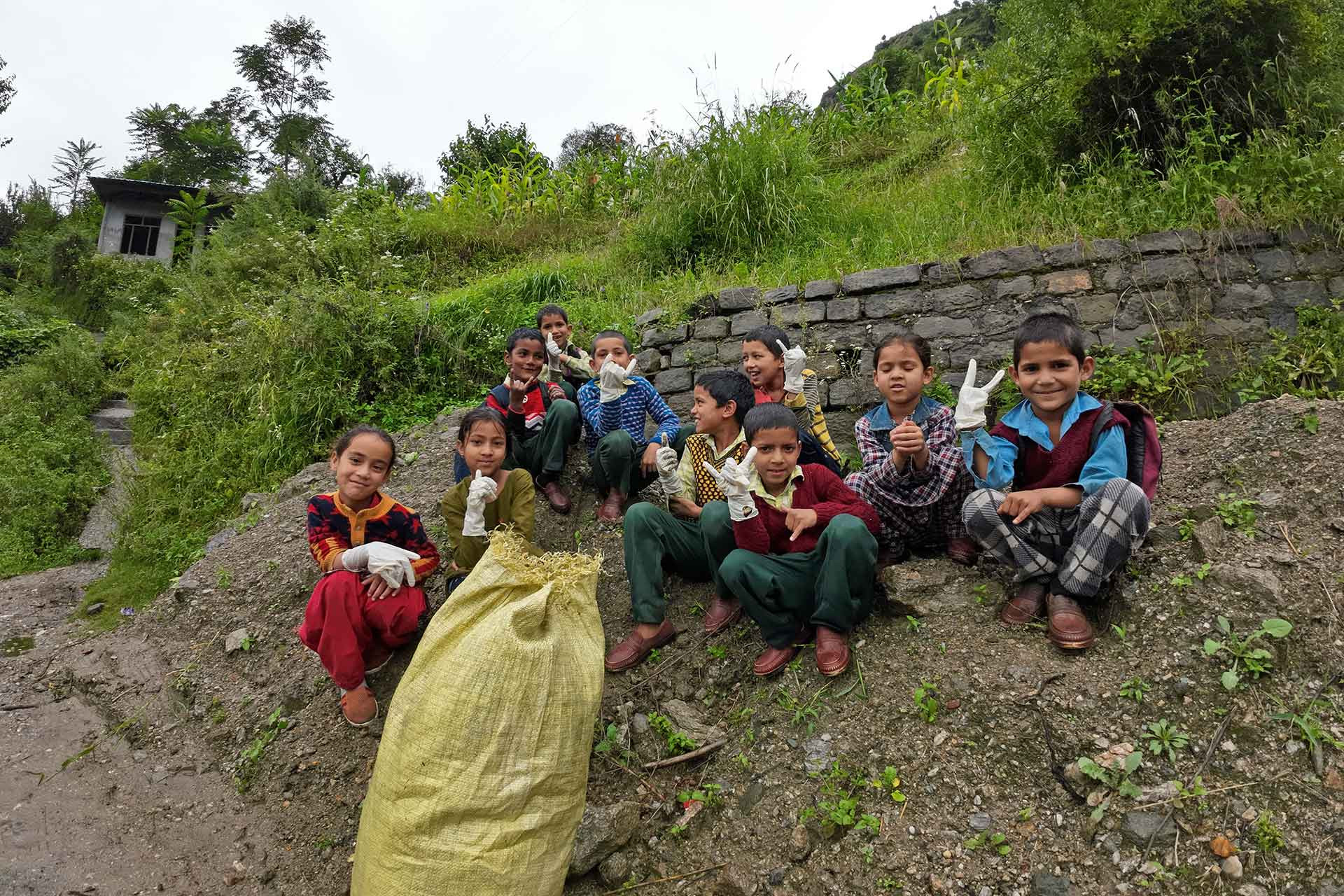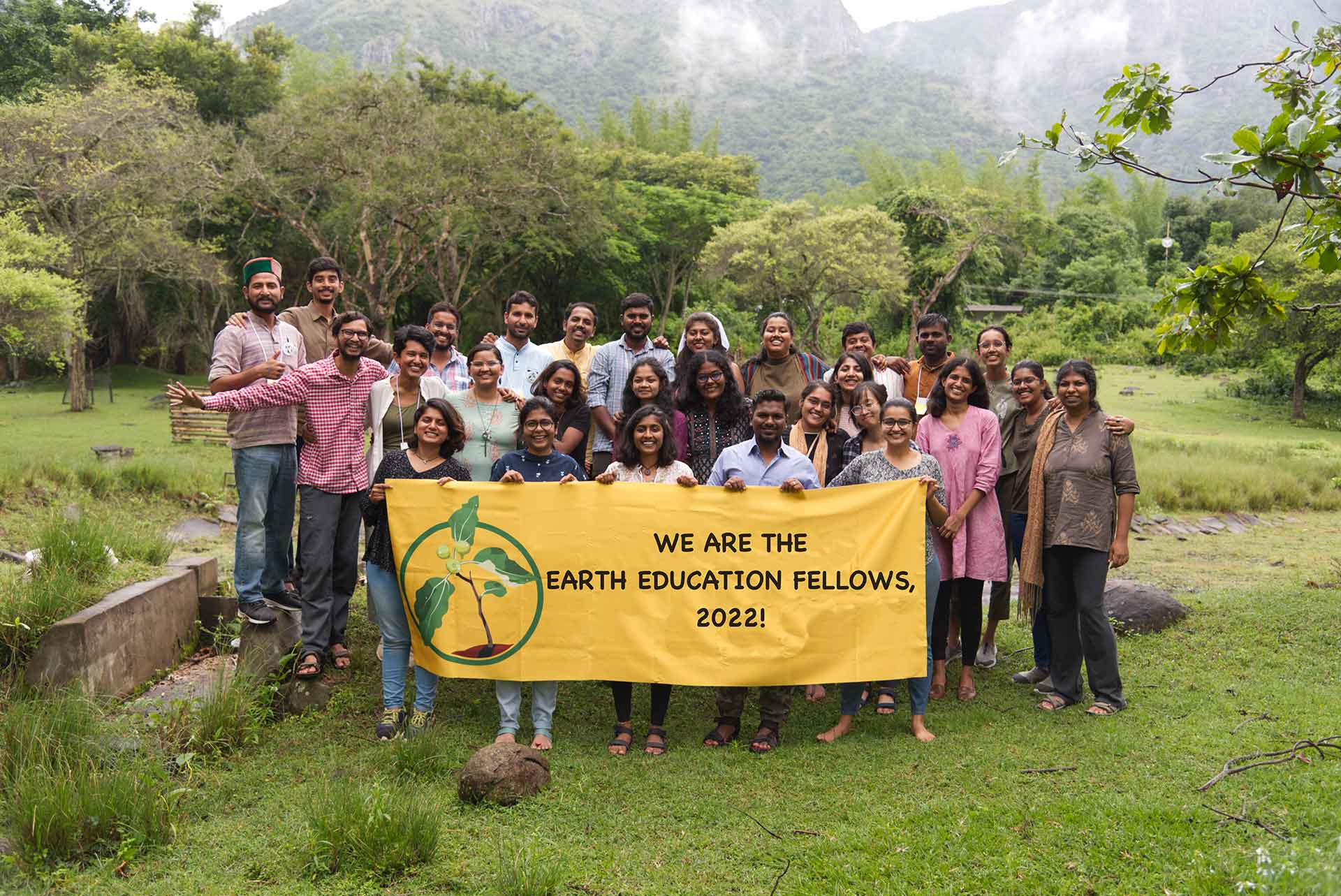Conservation Optimism is a global community dedicated to sharing optimistic stories about conservation and to making people feel empowered to act for nature.
It has been a year since I began my journey as a researcher, but I find myself wishing away this early-career phase for the sense of security that comes from knowing exactly what you want to do and growing your knowledge and understanding in a specific research niche. I crave the intellect and expertise that belongs only to a conservationist who has devoted many years to the field. In a bid to discover what conservation means to me and kickstart my career in research, I started exploring as many habitats, communities, and research opportunities as possible.
Six months ago, if you had told me I would be teaching primary school children in a village in Tirthan Valley, Himachal Pradesh, I’d have probably laughed in your face. But soon after joining Himalayan Insight, a small start-up NGO in Tirthan Valley, I became part of the Earth Educators Fellowship with the Youth Conservation Action Network (YouCan), aspiring to teach the concepts of ecology and conservation in remote villages across the valley.
Most residents of the valley practice subsistence farming, but the rise in tourism has seen many households diversify and run homestays and cafes. Now there are also plenty of takers for the job of trekking guides in the Great Himalayan National Park. But with the advent of tourism and the resultant development, the very landscape of Tirthan is starting to change. The need for better road connectivity has resulted in more landslides, deforestation has increased along with the demand for firewood, and a lack of proper waste management has led to the streams and rivers in the valley becoming polluted.
Seeing these issues firsthand, I realised there is a deep disconnect between local communities and their environment, which I wanted to bridge through my teaching. I wanted the children to gain an ecological consciousness that would have vast and cascading effects on their lives. I also hoped to utilise the programme to engage with the other community members and bring about actual change within the valley.
A week with the facilitators and fellows from the Earth Educators Fellowship provided the perfect opportunity to reflect on my love for the natural world and brainstorm approaches to motivate young minds to share my passion for protecting it. Painting and sculpting became core processes of my teaching methodology, which focused on immersion and creativity—two experiences severely neglected in conventional schools. While still a work in progress, I believe this to be an engaging way to introduce nature and its wonders to young minds.
I am currently teaching at a primary school in Pekhri, a remote village in the valley, where I have curated a programme comprising three stages. The first stage revolves solely around observation. We are so used to our surroundings we tend to stop ‘looking.’ I dedicated a whole month to observing the flora and fauna all around us. We had meditation sessions where I encouraged the children to close their eyes and try to listen to the sounds and calls around them. We took binoculars and began searching for and identifying birds in the area. We took magnifying glasses and spent time observing any and all critters we could find. Finally, we documented everything. From drawing and painting to creating our own quirky animals, I was able to teach them how to identify plants and animals and how diverse and beautiful they can be.
The second stage involved understanding ecology and conservation. Using information from the biodiversity log we built, we curated a list of flora and fauna that would populate a small patch of forest. I then began introducing problems to this small ecosystem, relevant to their context, such as deforestation, forest fires, waste management, unsustainable tourism, and water pollution. The goal here was to have them trace the chain of consequences when one or many trees are cut or when a large area of forest is burnt or when too many people begin visiting such a serene location. Quite interestingly, I watched them create this chain of consequences as examples that affect their daily lives. Deforestation, when linked to soil erosion, had children painting landslides that blocked roads and killed people. Reduced rainfall and rising temperatures were depicted through dry fields and lower crop yields. These were the biggest signs that I was making an impact with the children.
This takes me to the third stage, which is about reflection and taking action. Through observation and by gaining an understanding of the ecological challenges, the children had formed a strong connection with their surroundings. Now I wanted them to reflect on their household or community practices, and if they were interested, to take up a passion project. Without much prompting, I noticed that the children were especially interested in waste management. For the next class, I brought gloves and sacks, and within an hour, the children had collected almost 8kg of waste that had been littered all over the village. They started making chants and imploring villagers to donate their refuse. Other children who didn’t want to get their hands dirty, decided to make signs to raise awareness in the village and encourage people to use a bin.
We didn’t stop there! Together, we learned to sort the waste and find creative ways to recycle it rather than burn it, which was the conventional method of waste management in remote villages that lacked access to municipal services. I resonated with their pride and enthusiasm at taking responsibility for their community’s functioning and taking active steps to remedy it. I am currently working to have waste bins with signs made by the children set up along popular paths, whereby a municipal truck can collect the trash and send it to a recycling plant. I believe it can be a perfect example of noticing a practice, acknowledging it as a problem and taking the necessary steps towards a self-sustaining resolution—a powerful way of thinking that will serve them in the future.
I hope that the next time they see an animal or bird, they will be curious to not just know the species but also learn more about its natural history. That is my end goal. To awaken another eye and another consciousness that doesn’t just walk through a forest but sees and tries to understand all the life that it holds. For primary school children, I think that’s the best skill you can pass on.
Not every class is great though. Sometimes, it is very difficult to try and control 20 naughty children. There are times when I’ve trekked 10km just to reach them, with a heavy set of supplies on my back. Sometimes, I notice that I haven’t engaged the children as I had hoped and I walk away from the class feeling quite demotivated. I go back, revise the lesson and brainstorm how I can make it more engaging, and it always works out on the second or third try.
What keeps me going is the affection I have received over time. Now, when I walk into the village, I have well-wishers asking me about what I have planned for the day's class. I have ten different lovely conversations before I reach the school premises and when I get to the school, I just need to pop my head in to remind myself why I do this. The kids wave and scream and smile when they see me. As soon as their teacher concludes for the day, they come running over to my station. Their eagerness to learn, the drawings and paintings they create, the skits they enact, all of it makes up for the tired mind, the aching knees and all my self-doubt about whether my work is having an impact. I can’t wait to see them again next week!






